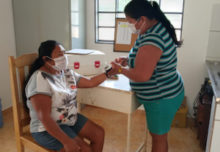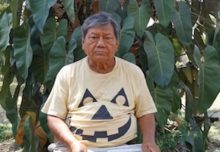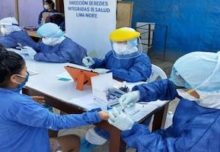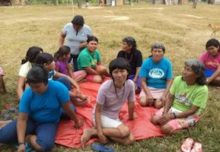 Navigating the uncharted outbreak:
Navigating the uncharted outbreak:
Spatio temporal dynamics of the COVID-19 outbreak in the Amazon
World Health Organization
9-19-22
Since the emergence of SARS-CoV-2 in December 2019, the virus has since become the greatest threat to global health in the recent decade. In just eight months after the first reported cases in the Region of the Americas on 21 January 2020, widespread community transmission had reached even the most remote areas in South American countries. In particular, the Amazon Region saw an unparalleled outbreak of COVID-19 cases compared to surrounding areas in South America. As coronavirus took root in the Amazon, traversing between isolated settlements along the river, the incidence rates in this area was comparable in magnitude to New York City rates and other urbanized area outbreaks in the continent.
A large portion of the Amazon rainforest is inhabited by indigenous peoples whose traditional and cultural beliefs have existed for centuries. The daily increase in cases and deaths from COVID-19 have dealt a severe blow to these people. The indigenous people in the Americas have a history of susceptibility to epidemics and COVID-19 is not likely to be an exception. This is complicated further by vulnerable populations living in isolated communities lacking healthcare services, doctors, and basic medications.
PAHO/WHO and Coordinator of Indigenous Organizations of the Amazon River Basin (COICA) have agreed on 15 July to work together to step up the fight against COVID-19 through provision of human resources, supplies and medical devices, including COVID-19 laboratory tests and treatments. PAHO and COICA also urged countries to coordinate response that is adapted to the social and cultural reality, and specific needs of the population and area, particularly border areas. These efforts are critical to mitigate the impact of “the eventual entry of the virus into isolated territories (that) will expose these populations to a serious risk of extinction.”
PAHO/WHO Epidemiological Alert on COVID-19 in Indigenous Peoples issued guidelines for Member States to address specific risk factors and vulnerabilities among indigenous peoples in the context of the COVID-19 pandemic, and ensure active participation of these communities in the planning and implementation of response measures. Specifically, COVID-19 surveillance strategies in indigenous communities should include: 1) community surveillance conducted by community members, 2) at the primary care level, 3) at the hospital level, 4) in health centers, 5) by using mortality data, and 6) through data from laboratory testing.
Reliable data on COVID-19 cases and other diseases affecting these populations are needed, along with better characterization of virus circulation, analysis on affected population, and impact of public health measures.










